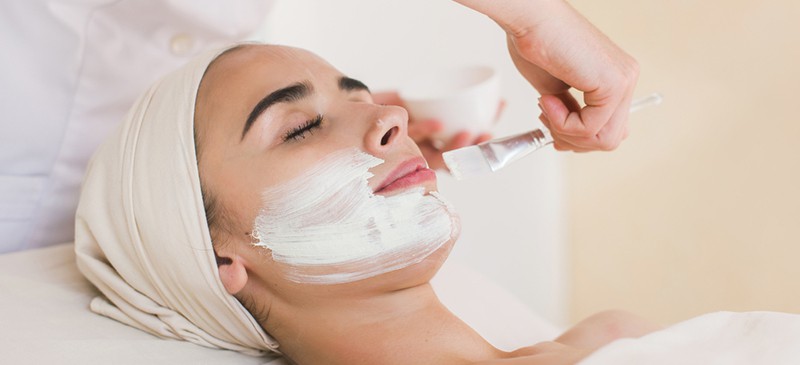This Dr. Axe content is medically reviewed or fact checked to ensure factually accurate information.
With strict editorial sourcing guidelines, we only link to academic research institutions, reputable media sites and, when research is available, medically peer-reviewed studies. Note that the numbers in parentheses (1, 2, etc.) are clickable links to these studies.
The information in our articles is NOT intended to replace a one-on-one relationship with a qualified health care professional and is not intended as medical advice.
This article is based on scientific evidence, written by experts and fact checked by our trained editorial staff. Note that the numbers in parentheses (1, 2, etc.) are clickable links to medically peer-reviewed studies.
Our team includes licensed nutritionists and dietitians, certified health education specialists, as well as certified strength and conditioning specialists, personal trainers and corrective exercise specialists. Our team aims to be not only thorough with its research, but also objective and unbiased.
The information in our articles is NOT intended to replace a one-on-one relationship with a qualified health care professional and is not intended as medical advice.
4 Potential Chemical Peel Benefits and the Types to Consider
January 1, 2019

Thinking of visiting your dermatologist for a chemical peel? Then you’re probably wondering if there’s actually any evidence that a chemical peels is good for your skin, or if peels are really just a waste of money and a bunch of hype.
Starting in the mid 1990s, chemical peels were one of the most common cosmetic procedures performed in dermatologists’ offices, according to the American Society for Aesthetic Plastic Surgery. (1) And while recent advances in laser skin treatments and anti-aging injections, such as Botox or Xeomin, made chemical peels less popular for some years, many feel that the chemical peel is now back and better than ever.
What Is a Chemical Peel?
A chemical peel is a skin-resurfacing procedure that uses a solution of various chemicals that are applied to the skin. (2) Chemical peel solutions cause the top layer of skin to peel off in order to hopefully smooth the surface of the skin and provide other benefits like fading fine lines and scars. Most chemical peels have a gel-like consistency and are applied to the face, though sometimes peels are used on other parts of the body, such as the neck, hands or chest.
After being applied to the skin, chemical peels intentionally make the skin blister and then peel, although chemical peels are now considered safer than in years past and are less likely to leave skin feeling “raw.” (3) The purpose of peels is to remove dull surface skin cells, which typically leads to an improvement in fine lines, acne, discoloration and more.
Something you might not realize about the benefits of a chemical peel? Recent advances in chemical peel procedures means that they help to deposit skin-healing ingredients into the skin, such as collagen, that can reduce lines and help improve tone. And after the top layer of your skin sheds following a peel, cells begin to increase collagen production and make more hyaluronic acid, both of which has anti-aging effects.
Types of Chemical Peels
A number of different types of chemical peels are now available, some of which are only performed by dermatologists and others you can apply yourself at home.
According to the Derma Network, there are three main types of chemical peels, which include: (4)
- Mild peels — Treats mostly mild skin problems, but also requires less recovery time. Results are usually less noticeable and dramatic, especially after just one treatment, but mild peels are usually appropriate for every skin color and pose little risk of hyperpigmentation.
- Medium-depth peels — Helps to remove facial lines, scars and birthmarks, but can cause side effects and take longer to heal from. Most people will see at least some results after one treatment, but multiple treatments are usually needed for full effects. Some dermatologists now recommend mild to medium peels that use multiple acids rather than one single acid at a higher strength, as multiple acids can lead to less irritation.
- Deep peels — Can be used to remove pre-cancerous growths, deep scars or wrinkles, serious acne and stubborn age spots. A deep chemical peel usually provides results with only one peel, however it can cause more severe side effects and be more costly. (5)
Many different chemical formulas are used in various skin peels. Some common chemical peel ingredients include: (6)
- Trichloroacetic acid (TCA)
- Lactic acid
- Alpha hydroxy acid (AHA)
- Vitamin C
- Hydroquinone
- Salicylic acid
- Resorcinol exfoliant
- Polyphenols
What can you expect a chemical peel to feel like — for example, how long does it take to peel after a chemical peel?
Peeling and sometimes burning sensations usually begin shortly after you finish having a chemical peel, typically within about 20 minutes after the procedure. Discomfort from the peel should end within about three to seven days (sometimes up to 14 days if a deep peel was performed).
How often can you have a peel repeated? Mild peels can be repeated about every four weeks, but you’ll need longer to heal from medium or deep peels, about 6–12 months or longer on average. (7)
Related: Is Dermaplaning Safe? Potential Benefits, Risks, Side Effects & More
Potential Benefits
1. Helps Exfoliate Skin & Makes It Smoother
One of the most common reasons that people choose to try a chemical peel is because they want smoother-looking skin with a more even tone and texture. Not only can a chemical peel leave skin silkier and more even toned, but it can help the skin to absorb skin-care products better due to dead skin cells being removed from the skin’s surface.
2. Minimizes Sun Damage and Hyperpigmentation
Mild chemical peels can be used to treat sun spots, dark spots, freckles and pigmentation problems that age skin. Peels may also reduce blotchiness and fine lines caused by the sun, making skin look more even and younger.
Additionally, recent studies have found that certain chemical peels can help reverse melasma, a type of hyperpigmentary disorder and “notorious dermatosis” that is often resistant to treatments, including laser treatments. (8) Melasma is a common chronic form of hyperpigmentation of the skin that can have a serious impact on someone’s self-esteem and quality of life.
In addition to wearing sunblock and managing hormones that may contribute to melasma — for example, it’s been found that there’s a connection between melasma and birth control pills and pregnancy— chemical peels can act as a second line of defense in patients who are good candidates.
3. Reduces Acne Marks and Blemishes
Certain types of chemical peels will help to control acne breakouts, plus reduce scarring from past blemishes. (9) They do this by unclogging pores, skimming the surface of the skin to remove blackheads, and depositing ingredients that help to fade post-pimple marks.
What’s the best type of chemical peel for acne scars? Salicylic acid and lactic acid are often used in peels that are intended to clear acne, while acids like trichloroacetic acid may be applied to fade scars.
4. Softens Fine Lines
If you’re looking to fade the appearance of fine lines/wrinkles near your forehead, eyes and mouth, then opting for a chemical peel is a good option. A medium-peel might be enough to soften lines that are moderate, while a deep peel is the best option for deeper wrinkles.
After a medium or deep peel, it’s very important to protect your skin from the sun as much as possible in order prevent potentially permanent changes in skin texture and color and to prolong results.
Related: What Is an Esthetician? Training, Benefits, Treatments & More
Risks and Side Effects
The many benefits you can get from a chemical peel might sound too good to be true — but not so fast. There are also disadvantages to chemical peels, especially if you have sensitive skin. Chemical peel side effects can potentially include:
- Stinging, numbness and burning of the skin.
- Skin peeling, including excessive peeling if you have a medium-depth or deep.
- Redness, which can range from the color of a mild sunburn to a deeper red, depending on the peel.
- Crusting or scabbing of the skin, due to skin cells being removed.
- Increased photosensitivity (sensitivity to the sun that can lead to sunburns).
- In some cases when someone has sensitive skin, scarring or dermatosis/pigment problems can also potentially occur.
How long should you expect to have to heal and recover after a chemical peel? The good news is that chemical peel side effects tend to only last for several days. Chemical peel recovery time ultimately depends on factors like the type of chemical peel you had, your age and any reaction you may have had to the chemicals used.
Cost
Professional-strength chemical peels will be performed at a doctor’s office, usually by a dermatologist. However, over-the-counter options are also now available (more on those below), although they tend to provide less significant results.
Chemical Peel Cost:
What does a chemical peel cost? The cost of getting a chemical peel varies substantially, depending on which type of peel you choose and where it’s performed. But in most cases, chemical peels are not cheap — especially if you need more than one to see results.
The average chemical peel can cost $500–$700 for each treatment, but prices range from $150 for a mild peel up to several thousand dollars for a series of deep peels. (10) While this might seem like a steep cost for good-looking skin, chemical peels are still less expensive than superficial fractional-laser treatments, which can run up to $1,000 a session and usually require multiple treatments.
How many chemical peels do you need to see results? It depends on the condition of your skin prior to the peel, as well as the type of peel. Deep peels are typically only performed once because they have stronger effects, but mild peels may need to be repeated several times within a few months for the best results.
Who should consider chemical peels? If you have fair skin and light hair, you’re considered a good candidate for chemical peels — although people with darker skin tones can still see good results. Types of skin problems that are more difficult to treat with chemical peels include: skin sags, bulges, and severe scarring or wrinkles.
Keep in mind that after a chemical peel, your skin will temporarily be more sensitive to the sun and any products you apply. Be sure to wear sunscreen (ideally one that’s broad spectrum and above SPF 30) and consider limiting the time you spend directly in the sun for several weeks. To protect your skin from irritation, also talk to your dermatologist before a peel about whether you should stop using certain types of products or medications — including those used to treat cold sores, Retin-A, Renova, glycolic acid or some antibiotics.
Doing an At-Home Chemical Peel:
How can you safely do a chemical peel at home? A number of at-home chemical peels, masks, exfoliates and wipe products are now available, including those that contain many of the same ingredients as the peels used in doctors’ offices. But it’s key to purchase a quality product, to read ingredients carefully, to test your skin first and to give your skin time to heal between treatments.
Look for products that have 2 to 10 percent glycolic acid, which is typically enough to improve the appearance of mature and sun damaged skin. Make sure your skin is makeup-free and clean of grease/residue before applying products, and read directions carefully. Afterwards, don’t shave, scrub, laser, exfoliate or exposure your skin to much sunlight for 24 to 48 hours. (11)
Here’s another option: rather than trying to resurface your skin at home, you may be better off applying skin masks or anti-aging essential oils.
For example, you can make a homemade anti-aging serum— using jojoba oil, pomegranate seed oil, rosehip oil, and essential oils like lavender or frankincense — that richly hydrates your skin as well as provides antioxidant protection. Products that contain antioxidants and vitamins for your skin — like vitamins E, A and C —are also great for reducing sun damage and improving the appearance of skin.
Be sure to perform a small patch test to make sure you don’t have any sensitivities or allergic reactions to products you put on your face. And always buy oils that are 100 percent pure, therapeutic grade and organic to yield the best results.
Final Thoughts
- A chemical peel is a skin-resurfacing procedure that uses a solution of various chemicals that are applied to the skin. Chemical peel solutions cause the top layer of skin to peel off, revealing smoother skin underneath.
- Chemical peel benefits include: exfoliating skin, making skin smoother, minimizing sun damage, treating hyperpigmentation, treating acne/blemishes, and reducing appearance of scars, fine lines and wrinkles.
- Chemical peels come in varying strengths called mild, medium and deep peels. Side effects are more common after medium or deep peels. Chemical peel side effects can include: redness, burning, numbness, increased sun damage/burns, crusting and scabbing, and potentially scarring or changes in skin color.
Comments
Please keep comments under 200 characters.












Woops! I mean, what are the types to consider, please. :-)
Hi!! What are the four chemical peels to consider? :-)